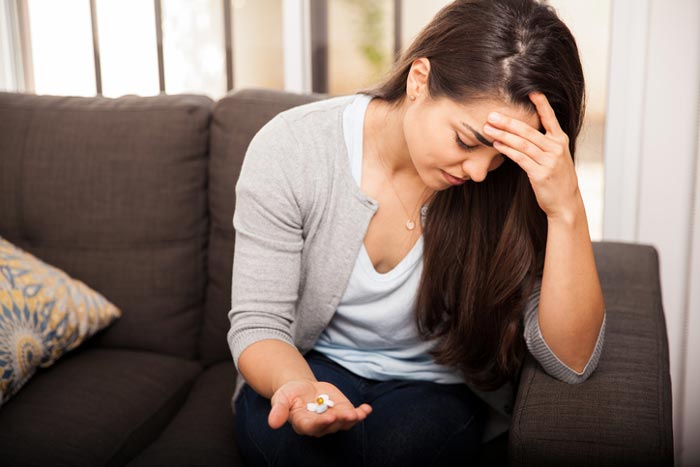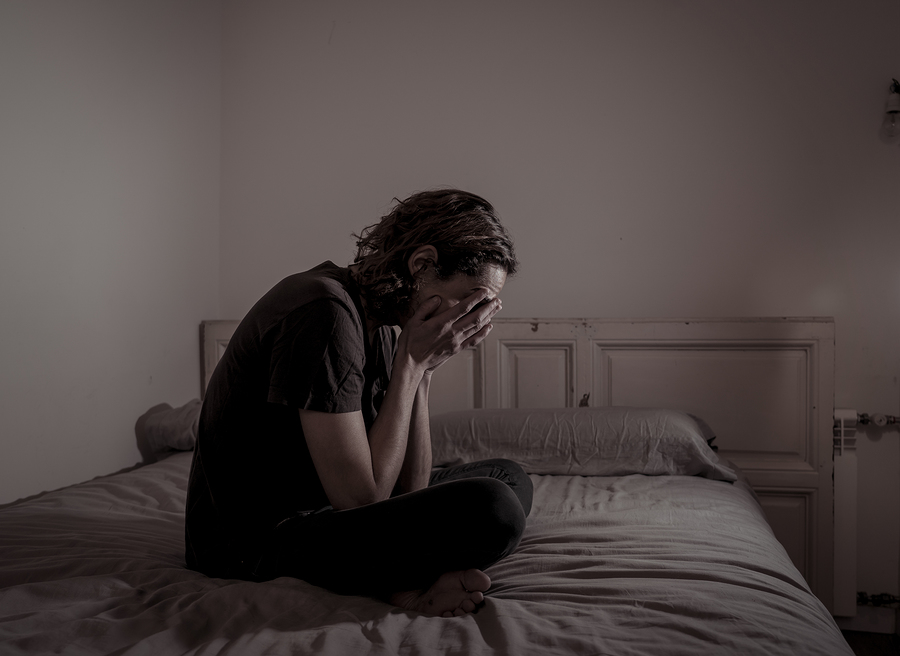Prescription Opioids Addiction Treatment Los Angeles
What is Prescription Opioids Addiction?
For the past several decades, prescription opioid use has been on the rise in the United States and much of the world. Opioids, which are analgesics, or pain-relievers, are commonly prescribed by doctors to treat severe and chronic pain.In fact, the medical community doles out prescription opioids at such a high rate that opioid use has become normalized. The Centers for Disease Control and Prevention calculate that there are 58 opioid prescriptions filled for every 100 Americans. Statistics show that 17% of Americans currently have one or more opioid prescriptions filled. These numbers do not include the vast quantities of people who use prescription opioids without a prescription — or who, having become opioid dependent, have switched from prescription opioids to cheaper alternatives such as black tar heroin. Because medical professionals so readily prescribe prescription opioids, many people do not understand the dangers or recognize the risks of substance abuse. But the simple fact is that prescription opioids are deeply implicated in the current national opioid addiction crisis.
Drug overdose has now emerged as the number one leading cause of accidental death in the United States, superseding even automobile crashes. The main cause is opioid overdoses, with 20,101 overdose deaths occurring in 2015 alone. In the United States, it is estimated that every 12 minutes someone will die of an opioid overdose. The rate at which prescription opioids are supplied to people is to blame. Research shows that 80% of new heroin users began by using prescription opioids.
While many people are indeed legitimately given opioid prescriptions to treat actual pain, even this population is susceptible to opiate addiction. People who suffer from this affliction are deemed by the medical community to suffer from a condition called opioid use disorder (OUD). People with opioid use disorder use opioids compulsively, suffer from negative emotions when they’re not high on opioids, and find it difficult to control their use. The clearest sign of the presence of opioid use disorder is trying to stop using opioids and repeatedly failing to do so. This sense of ones life being beyond ones control can be a profoundly demoralizing feeling. Unfortunately, because prescription opioids are purchased legally in a pharmacy, they are often understood as a safe drug and many people feel to take action before it is too late.
Not only does opioid addiction damage ones sense of self-worth, it can destroy relationships with friends and family. It can also make it difficult to obtain or maintain a job and ultimately destroy a career. People with opioid use disorder find it difficult to manage their finances and many people end up in debt. Because opioid addicts often reach a point where they will stop at nothing to obtain drugs, they can sometimes face legal consequences for criminal behavior. Prescription opioid use — and the illegal opioid use to which it often leads — also does enormous damage to both physical and mental health. It can even be fatal in the event of an opioid overdose.
Opioid use disorder means that an individual finds it nearly impossible to stop taking drugs on their own. Thus, by definition, opioid use disorder requires outside help. Fortunately, treatment for opioid use disorder is widely available. Treating opioid addiction is usually done in several stages that reflect the unique needs of the individual as they recover. A variety of treatment options and modalities are used simultaneously to ensure recovery, including support groups and counseling. Treatments for opioid addiction also often include prescription drugs that alleviate cravings and limit some of the more severe withdrawal effects. Doing so provides patients not only with long term recovery and relief from the compulsion to use, but a means for living a healthier and more prosperous life in sobriety.

The first step in treating an opioid use disorder is enrolling in an opioid detox program. This first stage of treatment involves physically quitting and withdrawing from prescription opioids. As the substance leaves the body, individuals experience an assortment of physical and emotional withdrawal symptoms. During this stage, medical professionals at the detox program might prescribe methadone or buprenorphine, drugs that help individuals deal with the cravings and withdrawal effects that occur during severe opioid detox. It is crucial to go through opioid withdrawal under the medical supervision that a detox program offers. Unsupervised withdrawal can be dangerous and have disastrous effects on ones health. Sometimes medical interventions are necessary. It is also a painful and arduous time during which the majority of people benefit from counseling and the strong support system of a detox program. Depending on how severely addicted the patient is, an opioid detox program can last from a few days to a few weeks.
It should be understood, however, that opioid addiction is not cured as soon as one has detoxed and become physically abstinent. In fact, opioid use disorder, like many diseases, can be treated but never cured. After detox, patients are advised to continue treatment in a residential treatment center or an outpatient program. Doing so will allow individuals to continue to learn coping strategies, understand the underlying issues behind their addictions, work on their mental health, and develop skills to enable them to build a new life afterwards in sobriety.
Commonly Abused Substances
Signs of Prescription Opioids Addiction
While it is common for medical professionals to prescribe The American Psychiatric Association uses a book called the Diagnostic and Statistical Manual of Mental Disorders, or DSM-5, to diagnose mental health disorders. The official medical term for someone suffering from opiate addiction is opioid use disorder. The criteria for being diagnosed with opioid use disorder consist of eleven symptoms. Patients who suffer from a minimum of two symptoms can be said to suffer from opioid use disorder. The following are the eleven signs and symptoms listed in the DSM-5:
- A need for markedly increased amounts of opioids to achieve intoxication or desired effect.
- A markedly diminished effect with continued use of the same amount of an opioid.
- The characteristic opioid withdrawal syndrome
- Opioids (or a closely related substance) are taken to relieve or avoid withdrawal symptoms.
Risks of Prescription Opioids Addiction
While the obvious risks of prescription opioid abuse include severe health complications, excruciating withdrawal symptoms, and life-threatening drug overdoses, it is important to understand that the dangers go well beyond that. Substance abuse and addiction affect every aspect of a person’s life.

Individuals with substance use disorders end up prioritizing drug use above all else. As a result, they often suffer major consequences such as loss of work, divorce, loss of child custody, financial difficulties, incarceration, and even homelessness. Over the long term, opioids can also cause or exacerbate preexisting mental illness. Another risk is switching to an illegal drug that is even more dangerous and unregulated. The National Institute on Drug Abuse estimates that 4 to 6 percent of people who use opioid pain relievers in the United States end up moving on to heroin. Opioid use disorder exerts profound and destructive changes in a person’s life that can make them unrecognizable to themselves in just a short period of time.
- Drowsiness
- Confusion
- Constipation
- Nausea
- Slowed breathing
While these short term effects may sound tolerable, when opioid users suffer from slow breathing, they are at risk of hypoxia, a condition that occurs when the brain doesn’t get enough oxygen. Hypoxia can cause permanent neurological consequences, brain damage, comas, and even death. Substance abuse, even for a first-time user not suffering from drug addiction, can thereby result in an opioid overdose.
Over time, the body begins to develop a tolerance to the high levels of dopamine released. Opioid receptors in the brain also increase. The result is that users require higher doses of prescription opioids in order to achieve the desired effects. This is called tolerance and can quickly lead to physical dependence. When people begin to use higher quantities of prescription opioids or switch over to a more potent type in order to get high, they are likely suffering from opioid use disorder.
The effects of opioid withdrawal can also cause individuals to experience such excruciating suffering that stopping or cutting down can feel out of the question. Long term use can make this process feel nearly impossible for many. Extremely powerful prescription opioids such as fentanyl cause such intense withdrawal symptoms that it might be difficult for a user to go even a few hours without using. This can further solidify the user’s drug addiction.
When a person has become so physically and psychologically dependent on prescription opioids that they struggle to quit, they have developed a severe prescription opiate addiction. The consequences of a severe opioid use disorder can wreak havoc on a person’s life. Not only do physical and mental health deteriorate, but the vast majority prioritize drug use to such an extent that they struggle to productively engage in their responsibilities at work or school. Drug abuse damages relationships. Many people turn to street drugs such as heroin because they are cheaper and easier to come by. It doesn’t take long for a person to begin leading a life that they would have thought unthinkable before taking prescription opioids. What all opioid addicts have in common, though, is the deeply demoralizing knowledge that they are unable to quit taking drugs despite recognizing the severity of the damage wrought by them.
Prescription Opiods Addiction and Mental Health Disorders
Individuals who suffer from opioid use disorder alongside another mental health condition or conditions are known as “dual-diagnosis” or “comorbid.” These mental health problems vary widely and include bipolar disorder, major depression, anxiety disorders, obsessive-compulsive disorder (OCD), among others.

According to the National Survey on Drug Use and Health, approximately 9.2 million adults in 2018 were diagnosed as dual-diagnosis. Addiction and mental health are deeply intertwined. Those with opioid use disorder are at an increased risk of experiencing mental illness. Many individuals with mental disorders are also drawn to abuse prescription opioids as a way of self-medicating, which can lead to dependence and ultimately addiction.
It is essential that treatment programs work individually with dual-diagnosis individuals to treat their underlying mental health conditions if any progress is to be made in addressing their opioid use disorder. People with co-existing conditions are a unique population requiring integrated care.
The Dangers of Quitting Prescription Opioids By Yourself
Anyone who suffers from opioid use disorder knows that it is extremely difficult to quit using on one’s own. Because opioids hijack the reward centers of the brain that control motivation, willpower is rarely sufficient to stop taking opioids. Over the short term, it is sometimes possible for people to refrain from substance abuse. Inevitably, however, drug addiction rears its ugly head again and a return to use is inevitable. For any heavy opioid user, outside help from a treatment center and via support groups such as Narcotics Anonymous is essential for long term recovery.
To make matters worse, an individual suffering from a physical dependence on prescription opioids is bound to experience a variety of complications and difficulties during the withdrawal process that call for supervision under trained medical and addiction professionals. These debilitating symptoms, which drive many people to relapse quite quickly, include anxiety, inability to sleep, muscle aches, heavy sweating, irregular heart rhythms, high blood pressure, and gastrointestinal issues such as vomiting and diarrhea. Medical experts advise that anyone interested in quitting prescription opioids seek out a licensed medical detox facility where a person can get proper care.
Symptoms of withdrawal usually occur soon after stopping use. These symptoms include:
- Sleep problems
- Muscle and bone pain
- Vomiting and diarrhea
- Rapid heartbeat
- High blood pressure
- Cold flashes and goosebumps
- Uncontrollable leg movements
- Runny nose
- Excessive sweating
- Intense drug cravings
Between 6 and 30 hours after the last dose, physical and psychological symptoms begin to make themselves apparent. When opioid receptors stop getting the doses they’re used to, individuals can experience anxiety, muscles aches, body pains, tiredness, insomnia, and sweating. Many people begin to experience intense drug cravings as well.
After 72 hours, symptoms have usually reached their height. Chills, stomache ache, nausea, vomiting, and diarrhea are all common. After the first week, symptoms often begin to die down. However, it is not uncommon for people with opioid use disorder to experience some symptoms of withdrawal for several months after discontinuation.
Enrolling in a medical detox is the best course of action for anyone interested in beginning the withdrawal process. Medical detoxes can provide a safe comfortable environment in which to detox. For individuals with severe addictions, medical professionals at these treatment centers can also prescribe drugs that reduce drug cravings and alleviate some of the symptoms of withdrawal.
Prescription Opioids Addiction Treatment at Create Recovery Center
Create Recovery Center’s Prescription Opioids Addiction Treatment Program is carefully supervised by medical professionals and counselors trained to handle addiction. Our safe, nonjudgmental environment is a perfect place to recover and develop the tools to treat a substance abuse problem. Create Recovery Center takes a holistic approach to each person. Case workers work individually with each patient to ensure that their program of recovery takes into account their unique needs and personal circumstances.
At Create Recovery Center, we understand that achieving sobriety is not merely a matter of quitting prescription opioids. Long term sobriety requires learning and developing the tools necessary to live healthy and fulfilling lives. To that end, Create Recovery Center works to ensure each patient is ready and prepared for life outside of a treatment center.

Services we offer include:
Create Recovery Center offers treatment programs for addicts who are ready to make a change. Whether you are beginning outpatient treatment or interested in an aftercare program, we are with you every step of the way. If you are ready to begin the process of obtaining freedom from the pernicious cycle of prescription opioid abuse, contact us today. Long term sobriety is yours if you want it.









